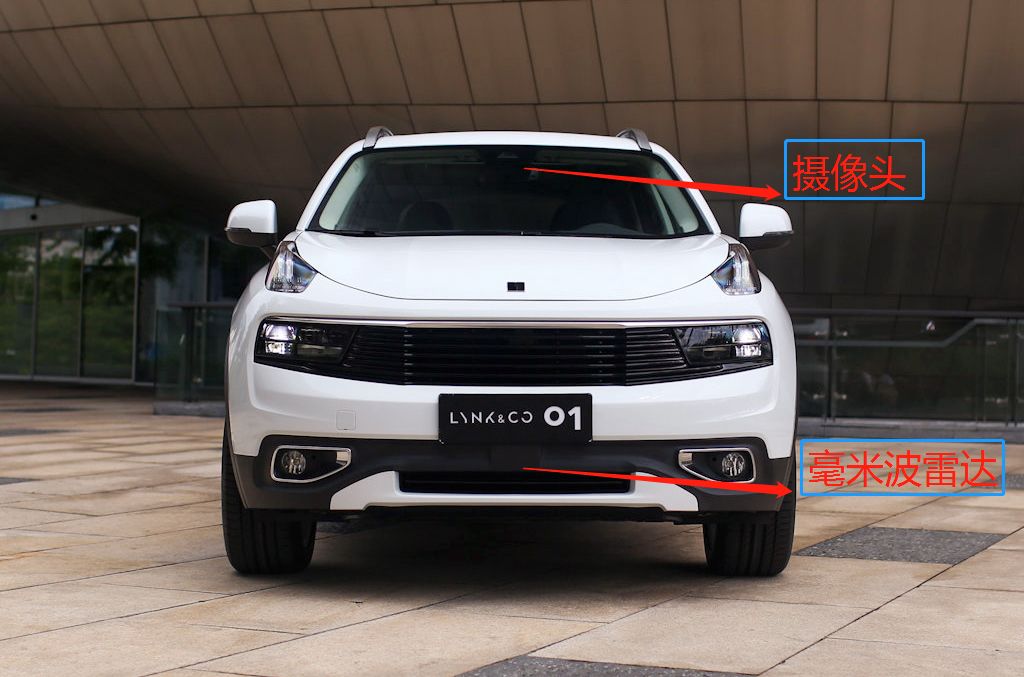How to solve the misjudgment problem of low-speed short-range AEB?
The automatic emergency braking system "AEB" has been included in the "C-NCAP Management Rules (2018 Edition)" rating procedures, accounting for 11% of the total score. This means that newly listed vehicles must be equipped with a 5-star rating or higher. AEB function.
In addition, as the price of the 77GHZ millimeter-wave radar decreases, the domestic chassis wire control technology gradually matures, and the cost of AEB configuration by OEMs will also decrease, making more and more models can be equipped with AEB systems. But from a consumer point of view, is AEB really practical?
Recently, "Gonggong Intelligent Car" saw a number of Lynk&Co 01 owners in an automotive forum that the Lynk&Co 01 vehicles equipped with AEB function are prone to false triggers in some low-speed scenes and are not easy to use.
Mr. Che Yuanyuan posted a message: "Two days ago, I came out from the gate of the community and there was a pile of ground at a narrow intersection. I have slowed down and passed carefully, but the collision warning system still helped me to brake suddenly when I approached the pile, although there was no brake. I stopped but still frightened me. I looked at it and nothing happened. I was boasting that the car was more reliable, and I was relieved when my daughter-in-law drove it.
Last night, after a bend, I was warned that there was a pile, and I was also slowing down and adjusting the direction to cut in. The collision warning system helped me to brake suddenly. This time it was completely braked, and I did not leave the oil. I was scared in a cold sweat. , I thought it was bumping into something!
There was a taxi right behind, and at the end I could only switch to gear N, then gear D, and move on. When I got home, I turned off the collision warning system. It was really love and hate. "
For this reason, the attentive car owner also summed up three experience: First, the collision warning can work, and can stop the vehicle; second, often misjudge the approach angle of narrow corners, can not judge whether the driving direction is correct and approaching The brake is triggered. For example, at the corner of the basement, if the turn is too close to the wall, it is easy to trigger AEB braking; third, it is easy to cause a rear-end vehicle to rear-end.
In addition to the owner’s feedback, other Lynk & Co 01 owners also encountered a similar situation in the low-speed driving scene: once they followed a bus and approached an intersection, visually inspected it over 5 meters, and suddenly stopped, which was scary. of. There is still room for improvement in the judgment logic of active braking.


For this reason, "Gonggong Smart Car" communicated with some relevant industry insiders and relevant R&D personnel of OEMs:
Lynk & Co’s ADAS engineer said: Lynk&Co 01 ADAS uses a full set of Continental solutions, medium-fit models use pure millimeter-wave radar solutions, and high-profile models use vision-fusion millimeter-wave radar solutions.
Lynk&Co 01’s AEB system can achieve 10-40KM/H deceleration and braking for vehicles. The vision fusion millimeter-wave radar program AEB program can detect and identify pedestrians. When the vehicle speed is within 25KM/H, it can be used for vehicles with a height of not less than 80cm. Pedestrians can effectively avoid collisions.

The vehicles equipped with AEB function are also divided into two types. First, AEB that only recognizes vehicles, pedestrians, or vehicles and pedestrians; there is also a multifunctional AEB, which can identify other obstacles except vehicles and pedestrians, and belongs to a higher level of AEB. For example, this set of AEB carried by Lynk & Co 01. From the perspective of AEB international standards, the AEB system that only recognizes vehicles and pedestrians can only identify vehicles or pedestrians, and cannot distinguish other obstacles other than vehicles or people, nor can it identify walls and piles at the corners of the basement. , Pillars or other obstacles, if a wall is placed in front of it, it is likely to hit it.
For example: Tesla MODEL X belongs to the AEB that only recognizes pedestrians and vehicles; SAIC MG6 adopts the MOBLIEYE Q4 generation, which is also a pure visual AEB solution for vehicle and pedestrian perception. Moreover, most of the AEB vehicles currently in mass production can only identify vehicles and pedestrians.
Zhang Hui, CTO of Forward Qichuang, believes that the AEB system carried by Lynk & Co 01 can stop in scenes such as ground piles and walls at turns in underground parking lots. It may use multi-sensor fusion or even short-distance sensing. Ultrasonic radar, surround view camera, millimeter wave radar and so on. Because in terms of close-range perception, the angular resolution of the 77GHz millimeter-wave radar and the viewing angle of the monocular camera are limited. It is very difficult to rely on the monocular camera and the 77GHz millimeter-wave radar to do short-range low-speed AEB.
However, the low-speed close-range AEB using the multi-sensor fusion scheme can easily cause misjudgments in some scenes, and finally lead to places that can be passed at low speeds. If it thinks that it cannot pass, it will directly stop. Therefore, the above-mentioned consumers report that Lynk & Co 01 will be falsely triggered in low-speed scenes such as hitting a wall or hitting a pile in the basement, which is also a normal phenomenon. In addition, there are also low-speed AEB solutions that incorporate lidar, such as the Audi A8. However, Lidar is expensive and is rare in mass-produced models.
How can we solve these problems?
The industry believes that:
First, the steering angle sensor and vehicle dynamics can be combined to plan and predict the trajectory of the vehicle to prevent false triggers, but the resolution of the proximity sensor is not high enough, and it is currently difficult to achieve comprehensive perception;
Second, perform subsequent algorithm iterations for the trigger scene, and perform some special processing at corners or other scenes to make the conditions for triggering the brakes more stringent, which can reduce AEB false touches;
Third, limiting the low-speed perception distance of AEB can also improve consumers' experience of using the AEB function.
Finally, the OEM believes that the AEB system of the mass-produced car has undergone rigorous simulation tests, driving test tests, and multi-scenario road tests, reaching industry standards and meeting mass production conditions. At present, the application time of AEB is relatively short, and there is still a lot of room for improvement in all aspects. Multifunctional AEB is also a future trend. With the reduction of the cost of high-precision detection sensors and the iteration of algorithms, its functional reliability will gradually improve.
Some customers reported that AEB false triggering only occurs in low-speed scenes. For safety reasons, the false brake is better than the leaked brake, which is also considered by Lynk & Co 01 during the adjustment.
Water Proof For Switch And Socket
IP55 water proof, switch socket water proof , high pressure water proof
Guangdong Shunde Langzhi Trading CO., Ltd , https://www.langzhielectrical.com